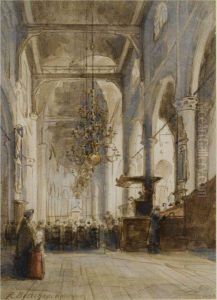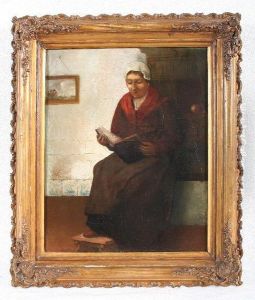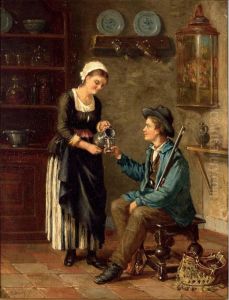Richard Bisschop Paintings
Richard Bisschop was a Dutch painter born on June 21, 1849, in Leeuwarden, Netherlands. He was known for his interior scenes, genre works, and occasionally portraits. Bisschop came from an artistic family, which undoubtedly influenced his career path. His father, Christoffel Bisschop, was a well-known Dutch artist, and his sister, Suze Robertson, also became a recognized painter.
Bisschop began his artistic education at the Royal Academy of Art in The Hague, where he trained under the guidance of prominent artists of the time. He was particularly influenced by the 17th-century Dutch masters, whose work inspired his own focus on capturing light and shadow in interior settings. Bisschop's attention to detail and his ability to evoke a sense of calm and contemplation in his scenes were distinguishing features of his work.
Throughout his career, Bisschop exhibited his work widely, participating in shows in the Netherlands as well as internationally. He was part of the art movement known as the Hague School, a group of artists who focused on realistic representations of Dutch life and landscapes in a subdued color palette, reminiscent of the Dutch Golden Age.
Richard Bisschop's contribution to Dutch art was recognized by his peers and art critics alike. He married fellow artist Kate Bisschop-Swift, who was also an accomplished painter, and they often inspired each other's work. Bisschop's paintings can be found in various Dutch museums, including the Rijksmuseum in Amsterdam and the Gemeentemuseum Den Haag.
He continued to paint and exhibit his work until his death on October 22, 1926, in The Hague. His legacy lives on through his paintings, which capture the tranquility and beauty of everyday life in the 19th and early 20th centuries.


